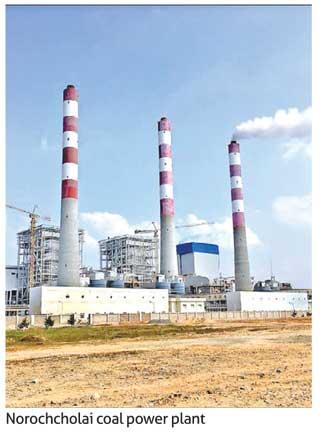Reply To:
Name - Reply Comment
The government has ruled out any coal-based capacity additions or new coal-fired power plants as it reaffirms on the target set for the country’s power sector to achieve carbon neutrality in 2050 while meeting 70 percent of the country’s power generation through renewable energy sources by 2030.
 The Cabinet of Ministers approved the country’s revised Nationally Determined Contributions (NDCs) under the Paris Climate Agreement, recently.
The Cabinet of Ministers approved the country’s revised Nationally Determined Contributions (NDCs) under the Paris Climate Agreement, recently.
“No new coal power plant addition is expected for the future and converting the existing fuel oil-based combined cycle power plants to natural gas and introducing new natural gas-based power plants will support emission reduction efforts, contributing to revised NDCs. The long-term target of the power sector is to achieve carbon neutrality in 2050, based on which the national energy policy and strategies have been framed,” the Environment Ministry stated.
The Ceylon Electricity Board (CEB) earlier in its long-term generation expansion plan (LCLTGEP 2022-2041), which was submitted to the Public Utilities Commission of Sri Lanka (PUCSL) on July 26, 2021, proposed 300 MW extension to Lakvijaya coal power plant and 300 MW new coal power plant in Foul Point (Trincomalee).
Following the communication of the decision taken by the Cabinet of Ministers to approve the updated NDCs, the PUCSL asked the CEB to resubmit an updated version of LCLTGEP 2022-2041, in complying with the government policy.
The plan proposed the development of 5,130 MW of natural gas and 600 MW of coal-based electricity generation to ensure a reliable supply of electricity for the 20-year period.
No coal-fired power development was identified beyond 2030, to enable the low carbon transition. The plan contained the already committed 300 MW extension to Lakvijaya coal plant and another solitary 300 MW coal identified to be developed in 2028. These two coal-fired plants will add the much-needed fuel diversity in the firm conventional generating capacity mix to ensure energy supply security.
Sri Lanka’s electricity demand was approximately 15,714 GWh in 2020 and around 37 percent of this demand was met by renewable energy resources in the year. The electricity sector accounted for around 39 percent of the country’s CO2 emissions in 2018.
As an alternative to earlier proposed coal-based power capacity additions, the government plans to set up new combined cycle power plants, with gas turbines to generate 700 MW capacity.
However, foreign financing would be critical to realise this plan, as it was presented as a conditional commitment in the updated NDCs.